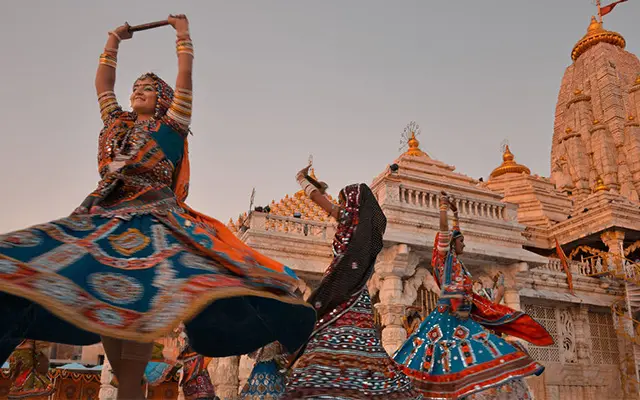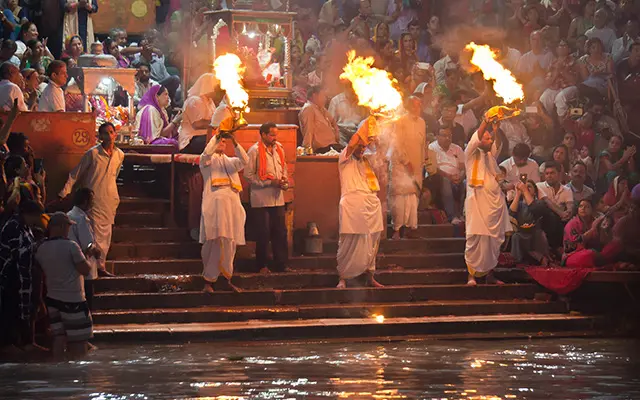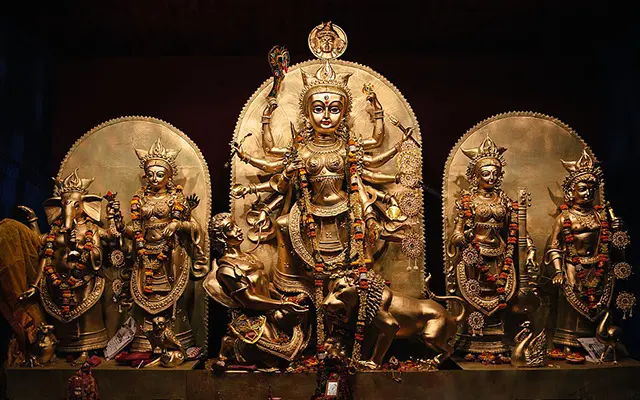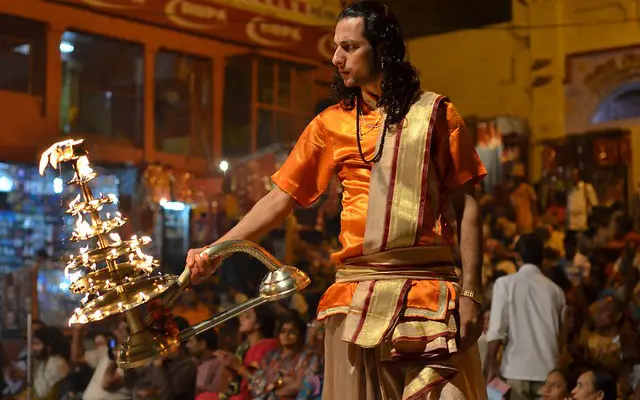The 9 days - 9 colors of Navratri festival
Find out the significance of colors at the nine days of Navratri and celebrate one of the most colorful festivals of India.
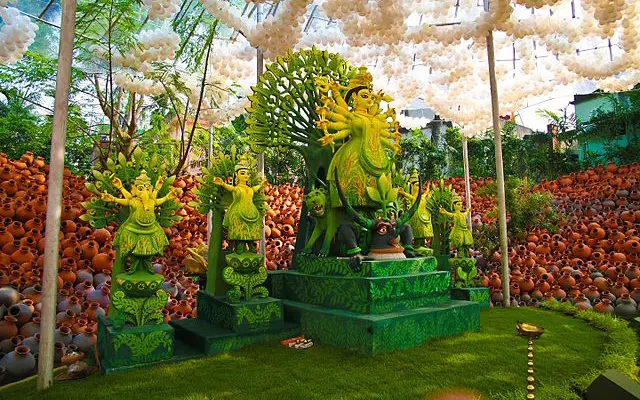
Navratri colours for nine days & their significance
The nine days of the festival are dedicated to Goddess Durga and her nine different incarnations. Each incarnation refers to a Goddess (avatar) who is associated with a different color. The avatars and the colors of the festival are:
The first form of Durga is represented by Goddess Shailaputri. It literally means "Daughter of Mountain" and is an incarnation of Parvati. The Goddess symbolizes action auspiciousness and power while the associated color is the red. Goddess Brahmacharini is worshiped on the second day of Navrarti. She is another incarnation of Parvati and symbolizes spirituality, calm yet powerful energy. The day is associated with the royal (peacock) blue. The third form of Durga is represented by Chandraghanta. Her name refers to the marriage of Parvati with Lord Shiva, while the related color is yellow. It is a lively color that symbolizes beauty and bravery. Goddess Kushmanda is related to the creative power of the universe, as well as to vegetation and agricultural prosperity. This avatar of Durga is associated with green color. With the avatar of Skandamata the Goddess is depicted to hold Lord Kartikeya in her arms sitting on a Lion. The associated color is grey and signifies the strength of a mother when her child is in danger. At the incarnation of Katyayana the Goddess is represented as a warrior with four hands riding a lion. Here the virtues of firmness and courage are symbilized by the color orange. The avatar of Kalaratri is adored on the seventh day of the celebration. The commemorated story refers to Goddess Parvati who transforms her skin to black in order to kill two demons and bring peace. For this reason, the associated color is white that represents peace and prayer. The eight day of the festival is dedicated to the Goddess Mahagauri. The color of the day is pink and symbolizes intelligence ance peace as well as the positive vibes and optimistic feeling. The last day of Navratri observes Siddhidatri as the adored avatar. The light blue or any other bright color dominates clothing and decorations while the admiration of nature's beauty is the main symbolization.Day 1 - Goddess Shailaputri - Red
Day 2 - Brahmacharini - Blue
Day 3 - Chandraghanta - Yellow
Day 4 - Kushmanda - Green
Day 5 - Skandamata - Grey
Day 6 - Katyayana - Orange
Day 7 - Kalaratri - White
Day 8 - Mahagauri - Pink
Day 9 - Siddhidatri - Light blue

The meaning of Navratri colors
Navratri can be characterized as one of the most colorful festivals in India. The colors are an identical part of the feast since they are related to the ritualistic process of the celebration and they include a deeper symbolization and meaning. Each day of the nine-day festival is dedicated to one of the nine avatars of Goddess Durga and each avatar is represented by a specific color that is used to worship the Goddess.
In some states like Gujarat and Maharashtra, this tradition has even a more practical approach since girls, women and some enthusiast men, adjust even their physical appearance in accordance with the color of each day. Thus, the festival observers are dressed with the specific color that corresponds to each day as well as they decorate the idol of the corresponding Goddess with the same color. This tradition, that has evolved during the years, points out the devout of the observers and it is believed that brings prosperity and luck.
India is a place where color is doubly bright. Pinks that scald your eyes, blues you could drown in.
Each avatar (Goddess form) has a specific day of the week to be worshipped on. But given that Navratri is a movable feast and the starting day is not the same every year, the sequence of the colors is not the same either. So the festival's first day plays a significant role in the sequence of the worshiped avatars and consequently to the construction of the sequence of the colors.
